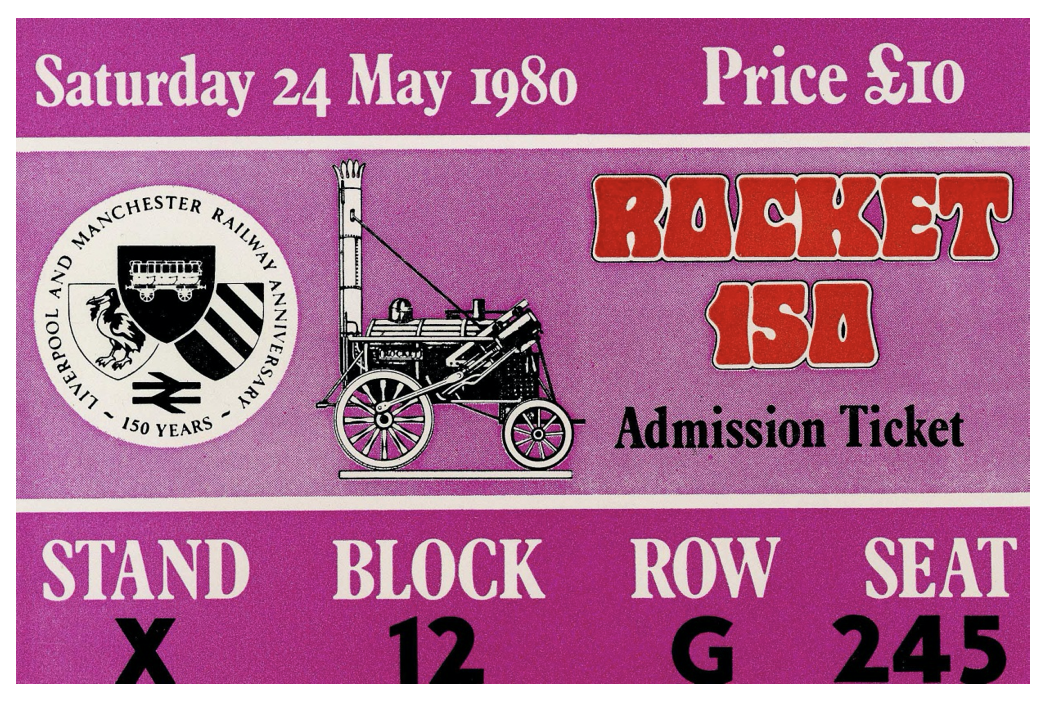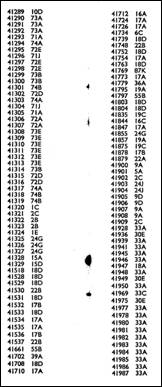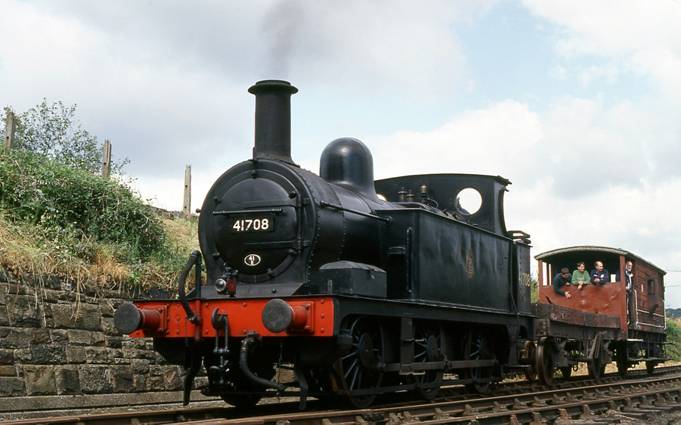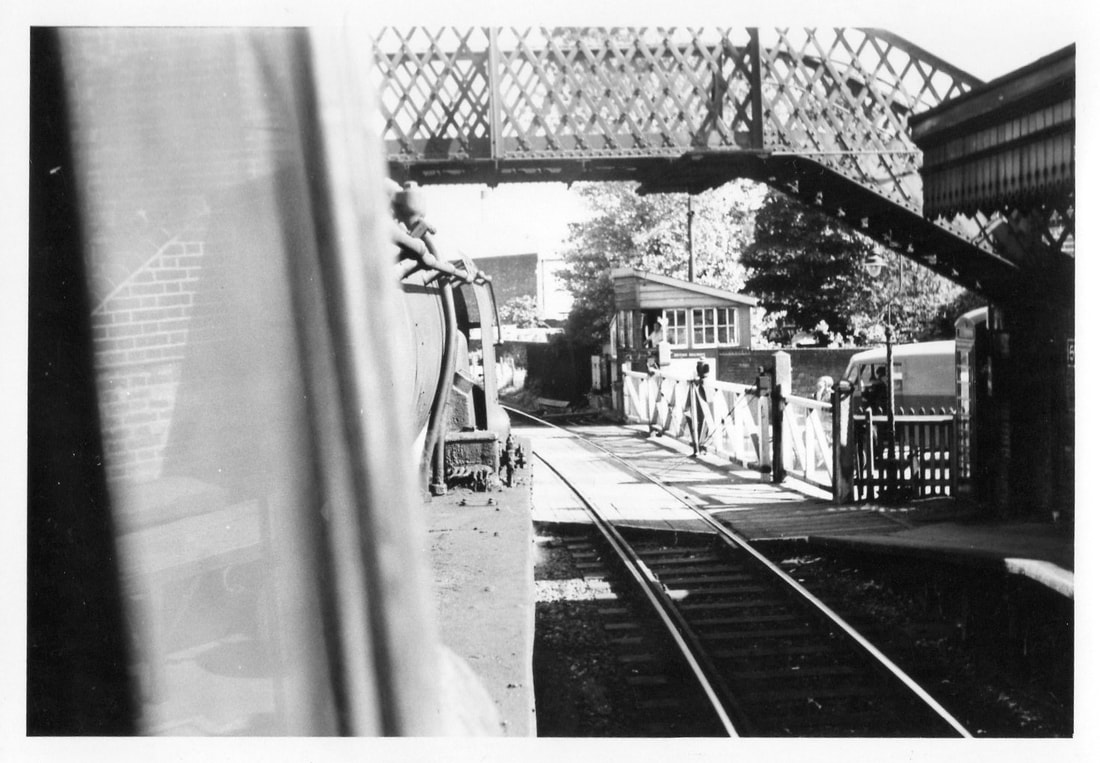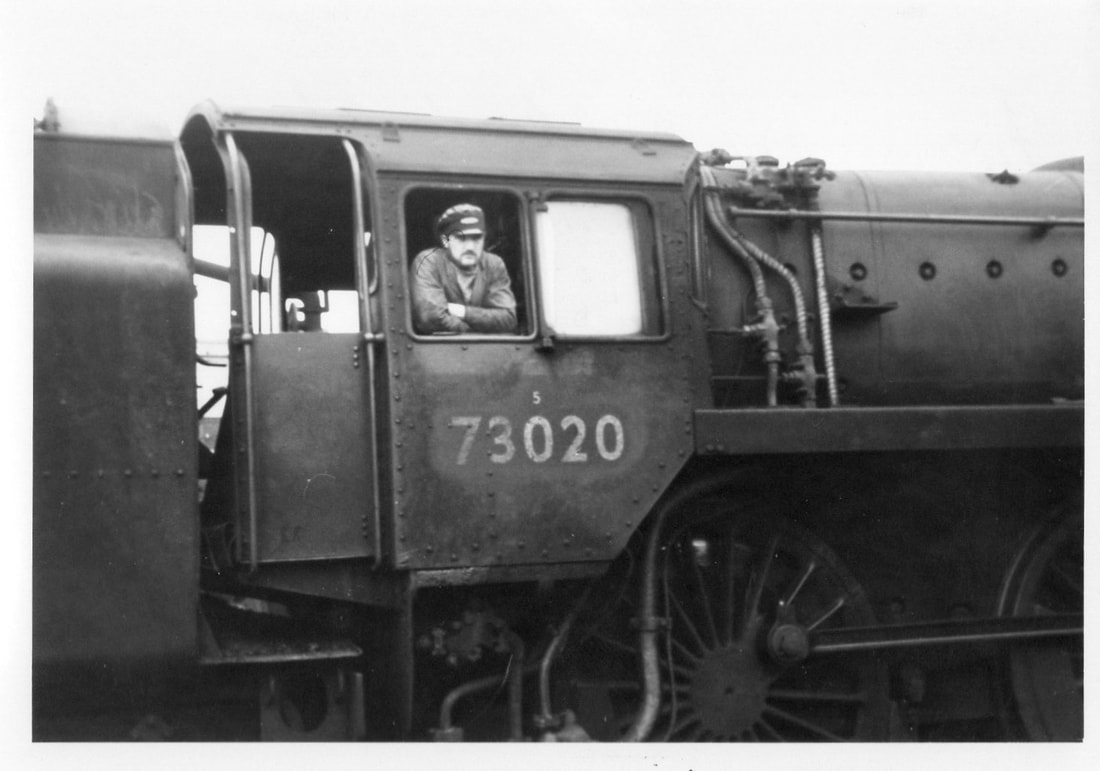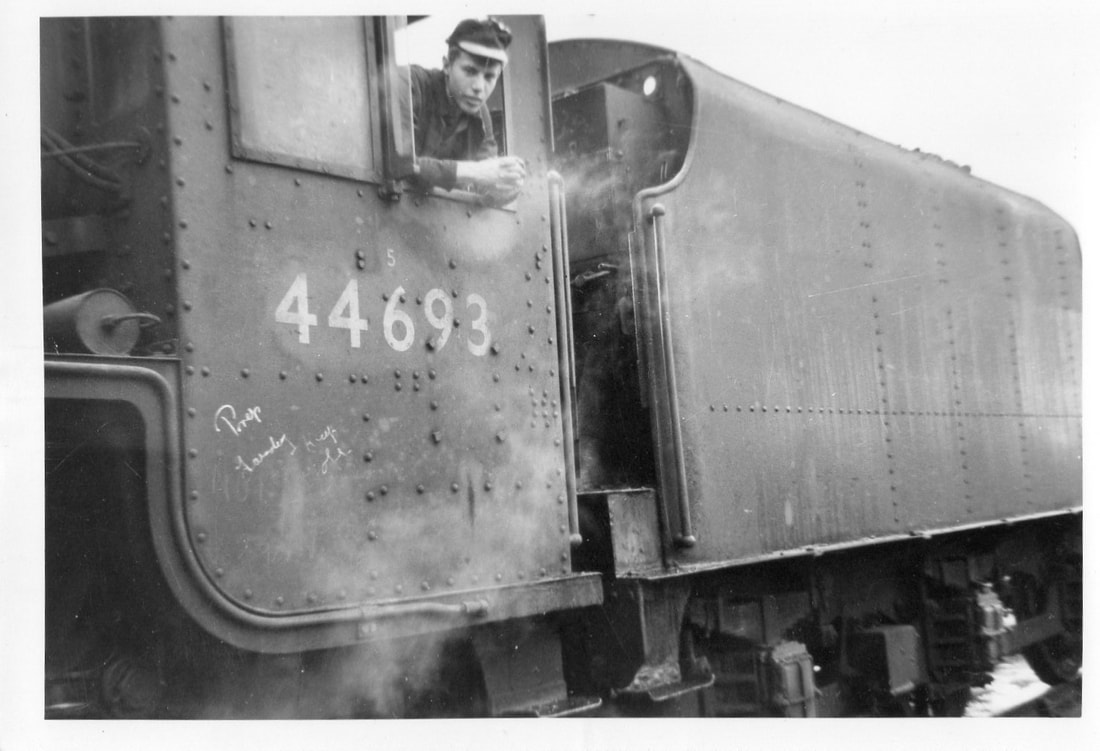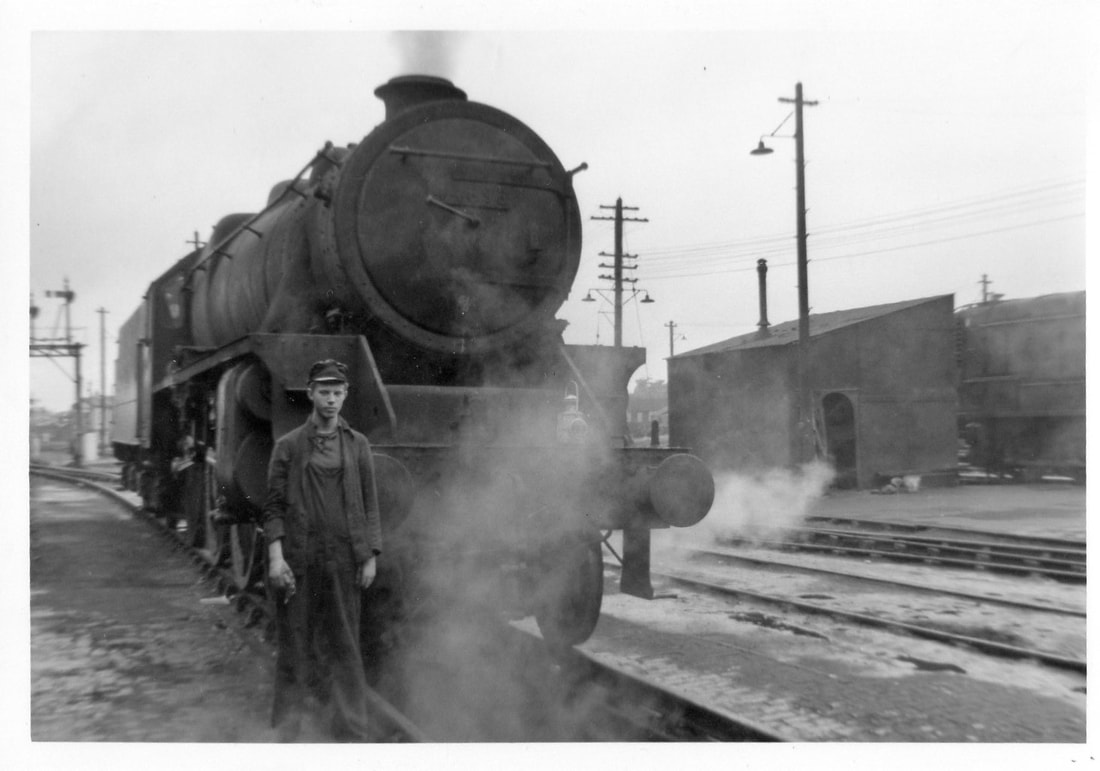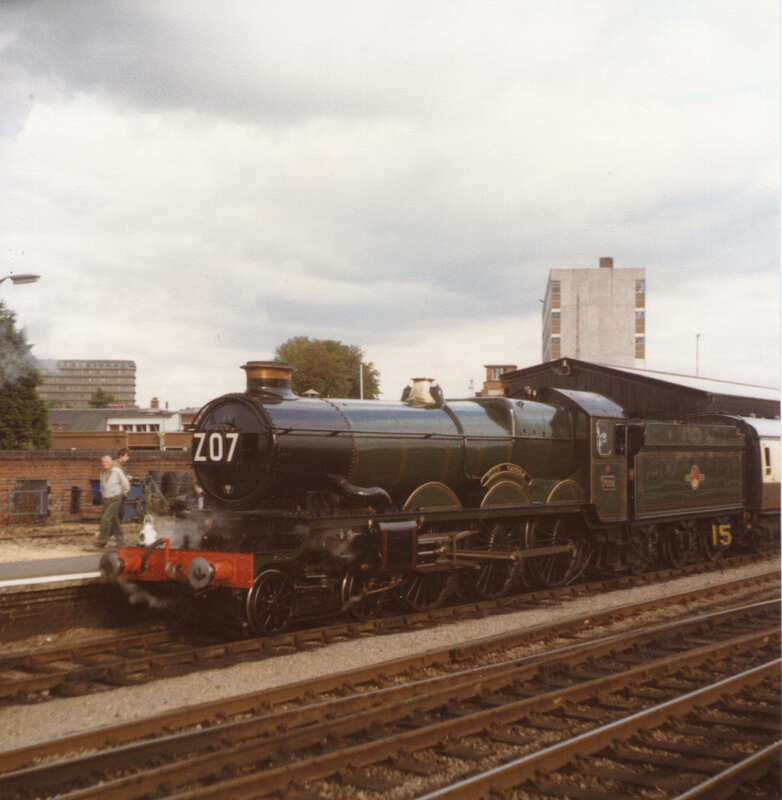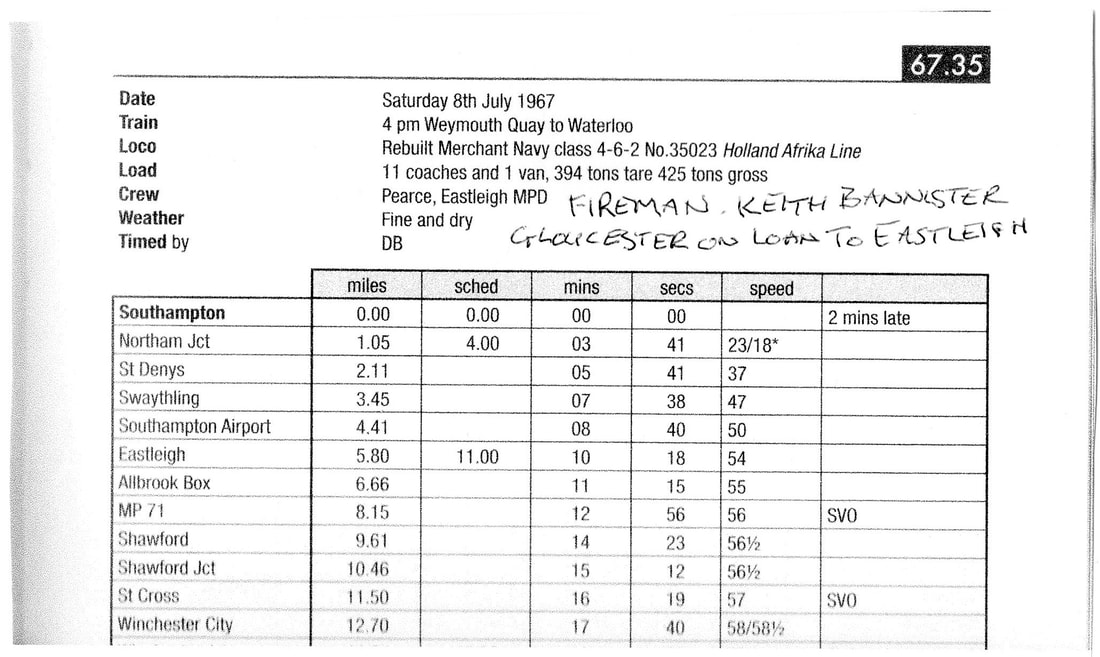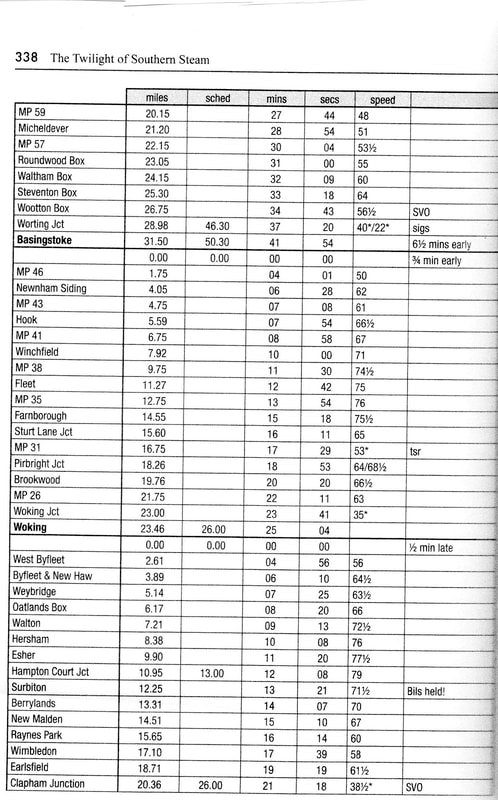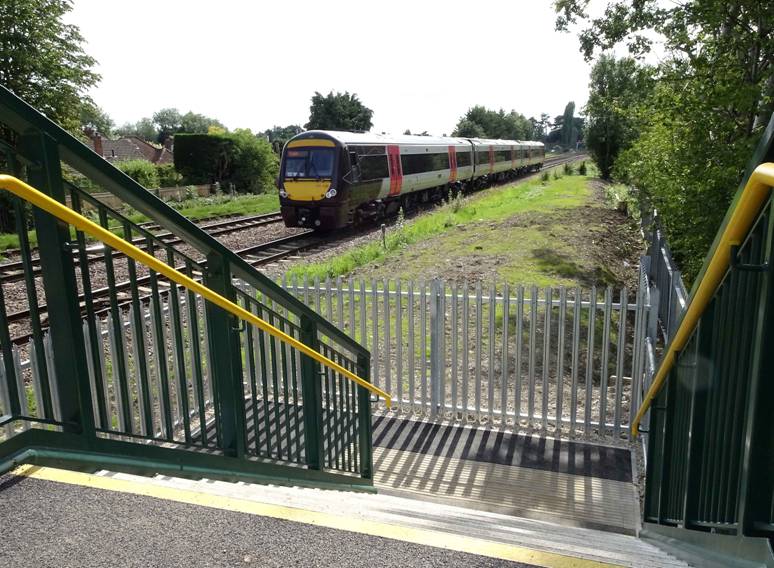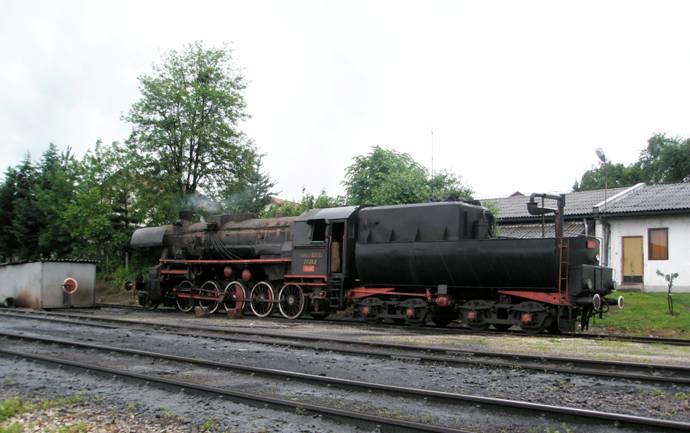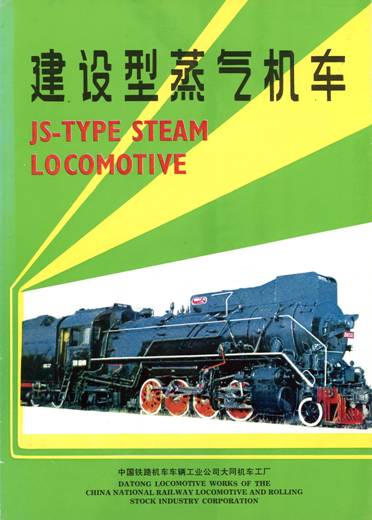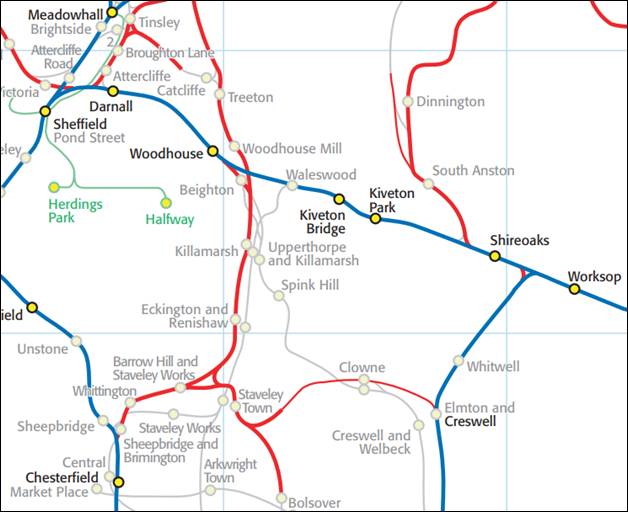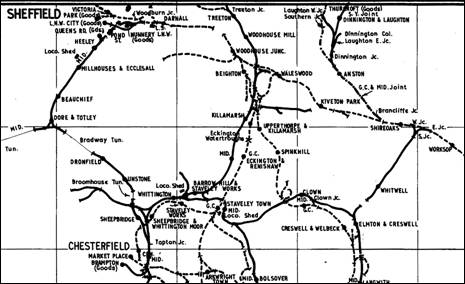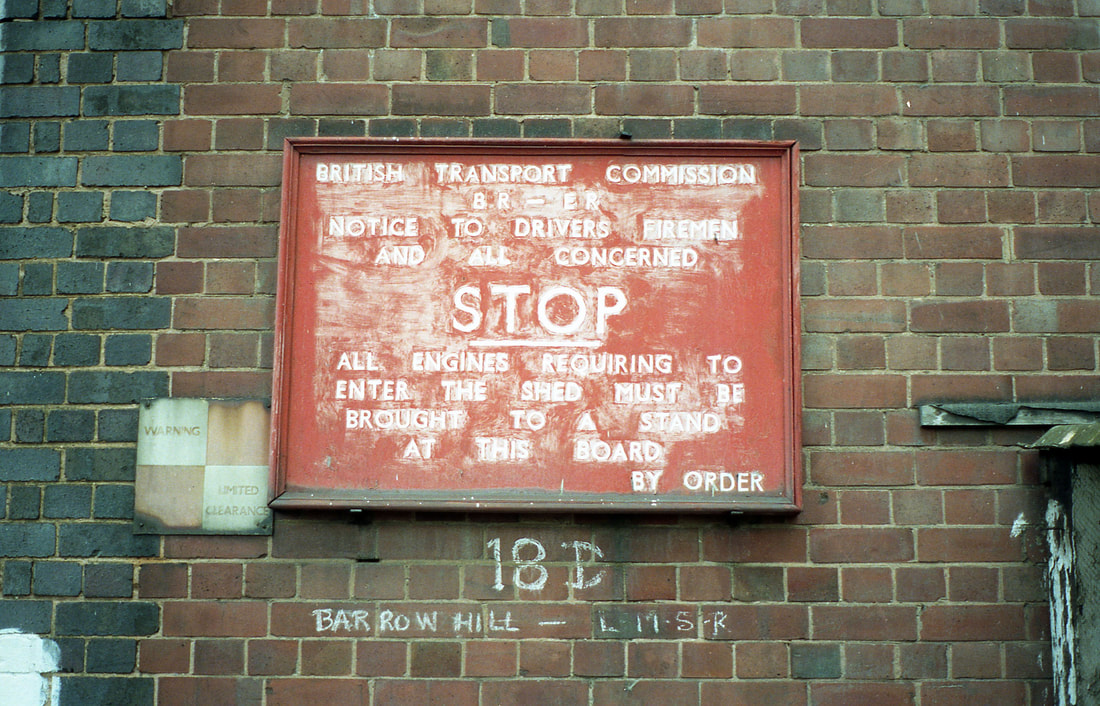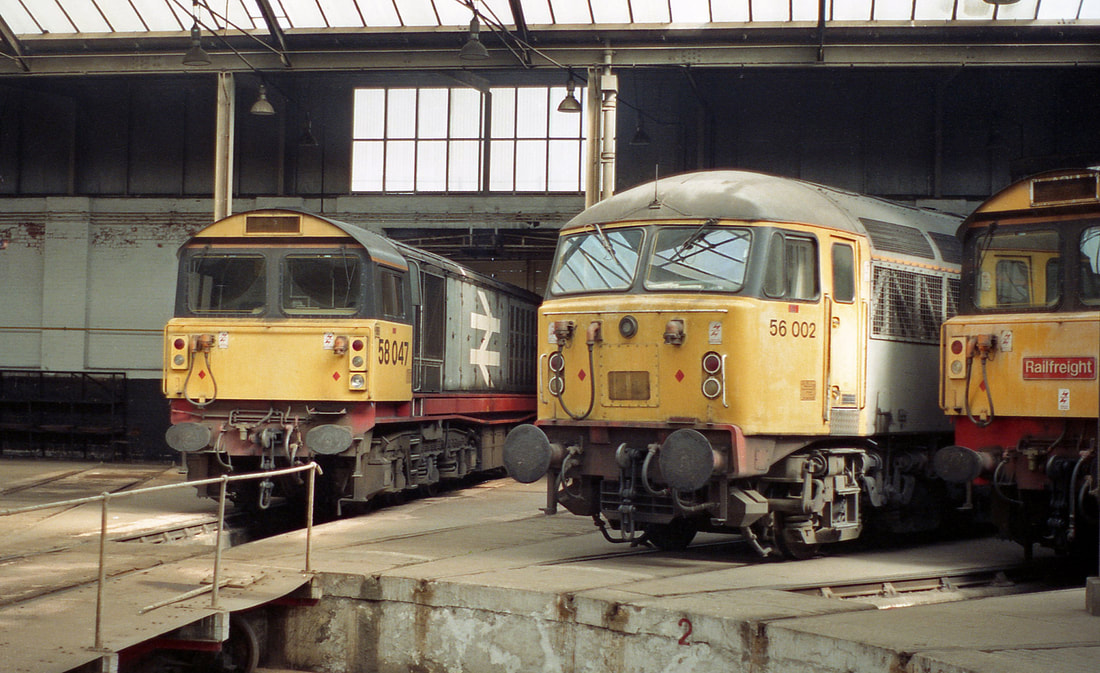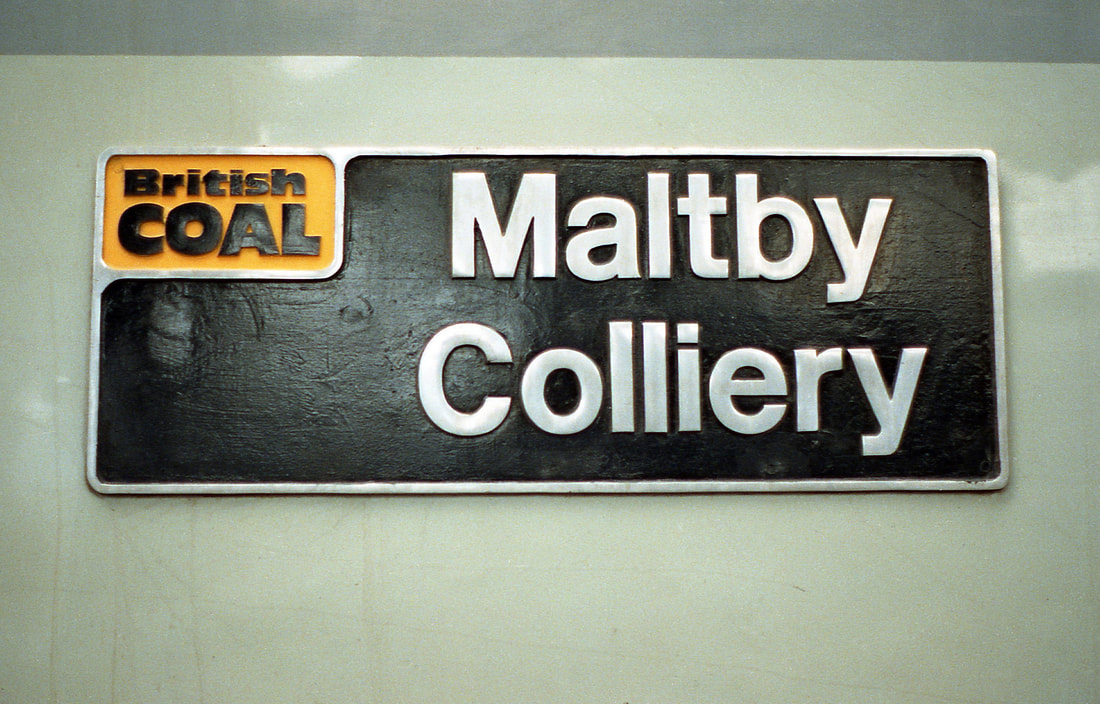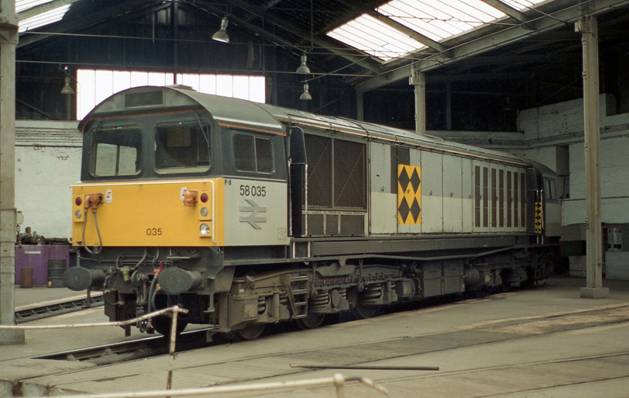Tewkesbury YMCA Railway Society
Slideshow - by the Club Members
During this period of staying at home, the club membership are encouraged to send in photos that they would like to share with the rest of the club membership.
Simply Email them to Jack if you have some of broadcast quality, about 1Mb in size – not too many post boxes or Bulleid pacific’s please!
Simply Email them to Jack if you have some of broadcast quality, about 1Mb in size – not too many post boxes or Bulleid pacific’s please!
Over the last year the footbridge at Cloddymore (Hatherley) Cheltenham, has been closed for replacement.
The new bridge structure was erected some months ago, and the final tree clearance, pathway and palisade fencing have now been finished. Here are a few photos illustrating what the new bridge looks like.
The good news is that the bridge is still very useable as a photographic location at the right times of day should the need arise, heaven knows how much the new bridge cost!
MIKE DODD
The new bridge structure was erected some months ago, and the final tree clearance, pathway and palisade fencing have now been finished. Here are a few photos illustrating what the new bridge looks like.
The good news is that the bridge is still very useable as a photographic location at the right times of day should the need arise, heaven knows how much the new bridge cost!
MIKE DODD
From Construction To Destruction & Beyond – A Tale Of Steam In China
If you thumbed through some railway magazines in the 1980’s, most of them contained enticing adverts for travel to foreign countries to view real steam in operation. Turkey, Poland, India, Pakistan, South Africa, China were all far off destinations that ran regular steam hauled services. Organizations such as Dorridge Travel, RT&P, Steam & Safaris and TEFS all offered trips for enthusiasts to see the remaining real steam action in the world.
Having completed an engineering apprenticeship and saved up some money, I decided to invest some of my earnings in a (Once in a lifetime) trip with TEFS to see what Chinese railways had to offer. One of the reasons for choosing China above other countries was to witness first hand new locomotives being built in 1987, what could be better!. The tour itinerary visited some of the many cultural sites as well, such as the Forbidden City, the Temple Of Heaven and Tiananmen square in Beijing, plus an excursion to The Great Wall at Badaling, Also included was The Terracotta Army in Xian and of course Datong Locomotive works, birthplace of Chinese steam locomotives.
On the 26th December 1987 the visit to the locomotive works at Datong had been arranged. According to the official leaflet, the works, situated North West of Beijing, was completed in 1959 taking three years to build. The buildings covered 261,000 square meters housing a workforce of 8,000 people producing both steam and diesel locomotives and their associated parts.
Having completed an engineering apprenticeship and saved up some money, I decided to invest some of my earnings in a (Once in a lifetime) trip with TEFS to see what Chinese railways had to offer. One of the reasons for choosing China above other countries was to witness first hand new locomotives being built in 1987, what could be better!. The tour itinerary visited some of the many cultural sites as well, such as the Forbidden City, the Temple Of Heaven and Tiananmen square in Beijing, plus an excursion to The Great Wall at Badaling, Also included was The Terracotta Army in Xian and of course Datong Locomotive works, birthplace of Chinese steam locomotives.
On the 26th December 1987 the visit to the locomotive works at Datong had been arranged. According to the official leaflet, the works, situated North West of Beijing, was completed in 1959 taking three years to build. The buildings covered 261,000 square meters housing a workforce of 8,000 people producing both steam and diesel locomotives and their associated parts.
Some 17 years later, one of many return visits was made to China, to witness the rapidly declining steam locomotive operations. At the time one of the reasons for a re-visit was the line that ran from Tongliao to Jining, North West of Beijing, over the Jingpeng pass. This line had a depot and locomotive servicing facility situated at Daban, 601 Kilometres from Jining.
A visit to Daban depot on the 18th September 2004, found the demise of the steam locomotive fleet in progress. Daban depot was home to a fleet of second-hand QJ (Qianjin – Advance Forward) class 2-10-2 locomotives and it was here where they met the final fate by succumbing to the cutting torch.
The following photos show the demolition underway, and the very crude methods used to reduce the once mighty locomotives, capable of exerting some 3,000 horsepower, into useless pieces of metal. Thus things have come full circle, from construction to destruction. Fortunately for the JS class steam locomotive, the story does not end there.
A visit to Daban depot on the 18th September 2004, found the demise of the steam locomotive fleet in progress. Daban depot was home to a fleet of second-hand QJ (Qianjin – Advance Forward) class 2-10-2 locomotives and it was here where they met the final fate by succumbing to the cutting torch.
The following photos show the demolition underway, and the very crude methods used to reduce the once mighty locomotives, capable of exerting some 3,000 horsepower, into useless pieces of metal. Thus things have come full circle, from construction to destruction. Fortunately for the JS class steam locomotive, the story does not end there.
At Sandaoling in the far North West of China not far from the Mongolian boarder century, the JS class locomotives still soldier on in daily use, well into the 21st century. The locomotives can still be seen working hard hauling coal and spoil from an open cast mine. This operation represents the sort of task that steam locomotives were used for at the very dawn of the steam age, some 200 years ago!
Bibliography & Further Reading.
China Railway Atlas 2nd edition, by the Quail map company, published November 1988
Locomotives Of China The JF1 and JS Classes by Robin Gibbons, published 2015
China National Railways promotional leaflets from 1987
MIKE DODD
Bibliography & Further Reading.
China Railway Atlas 2nd edition, by the Quail map company, published November 1988
Locomotives Of China The JF1 and JS Classes by Robin Gibbons, published 2015
China National Railways promotional leaflets from 1987
MIKE DODD
Rocket 150 Event
After the disaster of Shildon five years previously (poorly organised and crap for photos where I was) it was with some hesitation that I decided to go to another cavalcade. I coughed up my ten quid and hoped this would be better than the 1975 Stockton & Darlington parade.
The Rocket 150 event, to celebrate the original Rainhill trials, was held at Bold Colliery near St Helens. The main reason for going was to see the Midland single in steam. Bold was still using steam at that time and I’d hoped to see some....No chance.
The Rocket 150 event, to celebrate the original Rainhill trials, was held at Bold Colliery near St Helens. The main reason for going was to see the Midland single in steam. Bold was still using steam at that time and I’d hoped to see some....No chance.
|
I made an early start from Cumbria, but was unable to access the loco marshalling area. The weather was fortunately fine and the seat location was Ok and the accompanying slideshow illustrates what was on display.
The replica Rocket disgraced itself on the first day by derailing so failed to appear at its own event!! The rest of the day went without hitch and I was in good company with Dick Blenkinsop behind me with his multitude of cameras. Overall it was not a bad day, so I set off late afternoon to drive the 100 miles back home. I’m not a fan of cavalcades as they lack atmosphere, but there again, where can you see that number of locomotives in one location all in steam? Pete Matcham |
Working Steam In The Balkans June 2010 – Part 2
Having sampled the repair shops at Bukinje, it was time to explore some of the Kreka mines railway system in the area, to see what could be found.
The first port of call on the 1st June was to the massive coal loading plant at Sikulje where it was possible to see Kriegslok number 33-503 running underneath the loader. In 1966 the Kreka mines purchased five Kriegslok locomotives from the USSR for use on their railway system.
These locomotives were re-gauged from the Russian 5ft and re-numbered as 33-501 to 33-505. Locomotive 33-503 was originally numbered as 52-1345 being manufactured by Deutsche Waffen und Munitionsfabriken (DWM) at the Cegielski works in Poznan Poland, in 1944. Delightfully after the second world war, the communist government re-branded the Cegielski works as “Joseph Stalin Metal Works” where steam locomotive construction still continued during the communist era.
The first port of call on the 1st June was to the massive coal loading plant at Sikulje where it was possible to see Kriegslok number 33-503 running underneath the loader. In 1966 the Kreka mines purchased five Kriegslok locomotives from the USSR for use on their railway system.
These locomotives were re-gauged from the Russian 5ft and re-numbered as 33-501 to 33-505. Locomotive 33-503 was originally numbered as 52-1345 being manufactured by Deutsche Waffen und Munitionsfabriken (DWM) at the Cegielski works in Poznan Poland, in 1944. Delightfully after the second world war, the communist government re-branded the Cegielski works as “Joseph Stalin Metal Works” where steam locomotive construction still continued during the communist era.
"Who took his new wife out for a day at the seaside in the summer of 1979"
|
Barrow Hill Roundhouse Part 2
By Mike Dodd In 1957 the list of locomotives allocated to 18D, there are six of the Midland Railway 1F class, along with five of the smaller Midland Railway 0F 0-4-0 tank engines from 1907.
|
For many years small shunting engines were allocated to Barrow hill shed and one of the locomotive types was the Midland Railway 1F 0-6-0 side tank. As can be seen from the ABC of LMS locomotives dating from 1945, there were well over 100 of these locomotives manufactured, with some dating back as far as 1878.
In 1960 just 3 years later, the allocation of 0F class 0-4-0 tank locomotives was reduced by one to a total of four, and the allocation of 1F class 0-6-0 tank locomotive had risen to six.
There is an obvious reduction in the total numbers of both 0F and 1F class locomotives over the 3 year period due to the withdrawal and scrapping taking place at the time. By 1965 the last five 1F class locomotives were withdrawn from service. A year later in 1966 the final 0F class locomotives were withdrawn. Fortunately during 1966 it was possible for a group of enthusiasts to raise sufficient funds to purchase one of the withdrawn 1F class locomotives direct from British Railways. The locomotive chosen was numbered 41708 which had a long association with the Barrow Hill roundhouse being resident for 18 years. Having been restored to working condition in the 1980’s it saw operational service on several preserved railways throughout Britain. The locomotive has now been purchased by the Barrow Hill Engine Shed society where the engine can be seen on display in the roundhouse. |
On Saturday 18th July 1998, the preserved engine shed was able to host an open day for visiting enthusiasts to view four steam locomotives positioned around the turntable.
The locomotives were Aspinal 0F 0-4-0T No 51218, Fowler 3F 0-6-0T No 47298, Fowler 4F 0-6-0 No 44422 and Johnson 1F 0-6-0T No 41708.
The locomotives were Aspinal 0F 0-4-0T No 51218, Fowler 3F 0-6-0T No 47298, Fowler 4F 0-6-0 No 44422 and Johnson 1F 0-6-0T No 41708.
On Saturday 7th August 1999, locomotive 41708 re-numbered as 41748 (A former resident of 22B Gloucester Barnwood) works a demonstration goods train on the Dean Forest railway, just South of Whitecroft.
The following photographs were sent in by Keith Bannister.
They show him and club member Derek Smith on the footplate during steam days.
They show him and club member Derek Smith on the footplate during steam days.
|
Here are a few not very good shots scanned from prints.
All are at Gloucester in 1985 during the GWR 150 celebrations. The specials ran from Swindon to Gloucester during August on Tuesdays, Wednesdays and Sundays. The locos were shedded at Gloucester and the two used that day were towed by a diesel down to Swindon in the morning ready for the two trains. The coaches came from Ealing Broadway. Stephen Wilson |
My last steam firing turn on British Railways may be of interest to your members. You could keep your racing cars and motor bikes our racing track was the Bournemouth to Waterloo railway track with steam locomotives I had some really fast runs on that road mainly on the Bulleid pacifics although we had standard type locomotives has well.
All came to an end on the 8/7/1967 when I fired 35023, which was then nameless, up to waterloo on the last steam hauled Channel Island Express. It was a good steady run up to Waterloo but how I wish those days could have lasted forever.
Here is a log of the run plus a photograph of 35023 at Southampton I am stood behind the driver who has a grease top hat on.
Keith Bannister, ex Tewkesbury lad.
All came to an end on the 8/7/1967 when I fired 35023, which was then nameless, up to waterloo on the last steam hauled Channel Island Express. It was a good steady run up to Waterloo but how I wish those days could have lasted forever.
Here is a log of the run plus a photograph of 35023 at Southampton I am stood behind the driver who has a grease top hat on.
Keith Bannister, ex Tewkesbury lad.
Slideshow by Mike Dodd.
Working Steam In The Balkans May 2010 – Part 1
In May 2010 there was still daily operational steam locomotive activity taking place within Europe. The country of Bosnia and Herzegovina being part of former Yugoslavia, had several mining company’s employing steam power on a regular basis.
A cheap and “Easy” flight from Bristol to Prague, on the 27th May 2010, started a week long bus tour around the Balkans on a self organized visit to Bosnia by a group of Czech rail enthusiasts, who had chartered their own bus.
Joining the tour bus at Prague station the following day, the journey commenced travelling through the Czech republic, Slovakia and into Hungary. Very little English was spoken by the Czech enthusiasts, however, interpretation services were offered via a friendly Slovakian, who was also a tour participant. Whilst in Hungary, a visit to Csomoder narrow gauge forest railway system was made, which runs for approx 103Km, with parts of it now in preservation. After Hungary the route went via Croatia, into Zagreb for a short stop, and then eventually crossing over the border into Bosnia.
On Monday 31st May 2010, in very wet weather, the first regular steam operation was encountered at the Catici-Kakanj colliery in Bosnia. Here a 0-6-0 side tank loco Number 62-366 built by Duro Dakovic in 1953, as works number 366 was in use.
The locomotive was broadly based on the United States Army Transport Corps 0-6-0T and had the simple job of shunting the trucks under the loading shoots & conveyers to receive coal from the colliery.
In May 2010 there was still daily operational steam locomotive activity taking place within Europe. The country of Bosnia and Herzegovina being part of former Yugoslavia, had several mining company’s employing steam power on a regular basis.
A cheap and “Easy” flight from Bristol to Prague, on the 27th May 2010, started a week long bus tour around the Balkans on a self organized visit to Bosnia by a group of Czech rail enthusiasts, who had chartered their own bus.
Joining the tour bus at Prague station the following day, the journey commenced travelling through the Czech republic, Slovakia and into Hungary. Very little English was spoken by the Czech enthusiasts, however, interpretation services were offered via a friendly Slovakian, who was also a tour participant. Whilst in Hungary, a visit to Csomoder narrow gauge forest railway system was made, which runs for approx 103Km, with parts of it now in preservation. After Hungary the route went via Croatia, into Zagreb for a short stop, and then eventually crossing over the border into Bosnia.
On Monday 31st May 2010, in very wet weather, the first regular steam operation was encountered at the Catici-Kakanj colliery in Bosnia. Here a 0-6-0 side tank loco Number 62-366 built by Duro Dakovic in 1953, as works number 366 was in use.
The locomotive was broadly based on the United States Army Transport Corps 0-6-0T and had the simple job of shunting the trucks under the loading shoots & conveyers to receive coal from the colliery.
|
Many heavy industries such as coal mining make use of large buildings and structures to house the processing equipment required, and to maximise the output.
Similar large scale industrial concerns in the UK have all but vanished, so it was interesting to observe the sheer scale of operations that were in use. With a readily available source of fuel, the retention of steam locomotives at the colliery makes operational and economic sense. Quite fitting at the end of the steam age in the 21st century, that the steam locomotive should still be used as it was originally designed & intended, for the transportation of coal. |
|
A very primitive servicing facility was available to top up the locomotive with water every now & then. The crew for the locomotive sensibly take shelter in the locomotive cab whilst the deluge continues.
The following morning on the 1st June 2010 dawned dull, overcast and very wet. A journey in the tour coach northwards from Sarajevo for 3 ½ hours, provided a further opportunity to photograph regularly operating steam locomotives on the Kreka colliery railway system in Tuzla.
Arrival at the Kreka colliery railway system repair shops at Bukinje, sees a further class 62 locomotive 62-376 similarly built by Duro Dakovic in 1953 as works number 376. |
As the weather conditions continue to deteriorate further, and with no knowledge of the next planned operational movements, a final view of the colliery complex and loco 62-366 was taken before departure for overnight accommodation in Sarajevo.
Also in the works yard alongside 62-376 is locomotive 33-236 a Kriegslok, formerly 52-817 built by Borsig in 1944, one of several manufacturers for this prolific class of engine, that numbered over 6,700.
After exploring the yard area outside of the workshops it was time to go inside to view the repair activities being undertaken. Locomotive number 62-123 was present and receiving some minor attention.
|
Alongside the engineering workshop is a line of locomotives either awaiting repair, or being used as a source of spares to keep others running. Locomotive 62-637 built by Duro Dakovic in 1955, is in the centre of the photo below.
|
Also in the workshops receiving some valve repairs, is locomotive 33-248 formerly 52 4779 built by Maschinenbau und Bahnbedarf AG Berlin in 1943 for German the war effort, and still in use well into the 21st century
MIKE DODD |
Having concluded the workshop visit a final view of locomotives 62-376 and 33-236 is taken in the incessant rain prior to a visit to some other steam outposts of the Kreka colliery railway system.
|
|
A Visit To Barrow Hill Roundhouse 2nd June 1990 - Part 1
In 1870 the Midland Railway opened a locomotive roundhouse at Barrow Hill, situated just off the railway line from Chesterfield to Sheffield and formerly Worksop. The rail atlas extract (right) shows the rail network as it is today. Going back even further in time, prior to the grouping performed on the 1st January 1923, a more complex railway scene was evident (below). Comparing the two maps it is surprising that the vast majority of railway lines in the area survived the rationalisation of the 1960’s. For Barrow Hill station the passenger services were withdrawn as early as 5th July 1954, with the role of the line changing to more of a diversionary or freight route, serving the numerous heavy industries in the area. |
|
The roundhouse originally provided servicing facilities for the steam locomotives associated with the nearby ironworks at Staveley as part of a 100 year contract signed by the Midland Railway.
On the 2nd June 1990, at the time of the visit, the Barrow Hill roundhouse by then had lost its locomotive allocation and was relegated to a locomotive servicing point and signing-on facility. For a small donation to the local Railway benevolent (beer) fund, it was possible to gain access to view and photograph the roundhouse. As expected due to the nature of the heavy industry in the area, the locomotives viewed during the visit were mostly used for freight operations. Just 8 months after the accompanying photographs were taken, the facility closed for good on the 9th February 1991, having a working life of 121 years. |
The nameplate carried by locomotive 56012. Maltby Colliery was close to Barrow Hill, and can be seen directly North East of the roundhouse on the map at the beginning of these notes.
|
The railfreight coal sector chevron, introduced in 1987, has been applied to the side of 58035.
The roundhouse turntable is 54 feet 8 ½ “ diameter being constructed by Cowans of Sheldon and installed in 1962. It serves 24 roads around the turntable pit and is capable of both manual and electric operation.
|
A further view sees 56002, 5804x and 56015, awaiting their next turn of duty in the roundhouse.
A campaign group was set up to save the roundhouse in 1989 before the final closure of the site. In February 1991, the Borough Council granted the roundhouse grade 2 listed building status, being purchased by the Council from British Railways in December 1996.
Much funding work and restoration of the premises has followed over the years, culminating in the recent granting of museum status. In July 1998 the roundhouse opened for visitors who were once again able to visit the facility and learn about its history. MIKE DODD |
|
Tewkesbury YMCA Railway Society
97 Church Street Tewkesbury Gloucestershire GL20 5RS |
